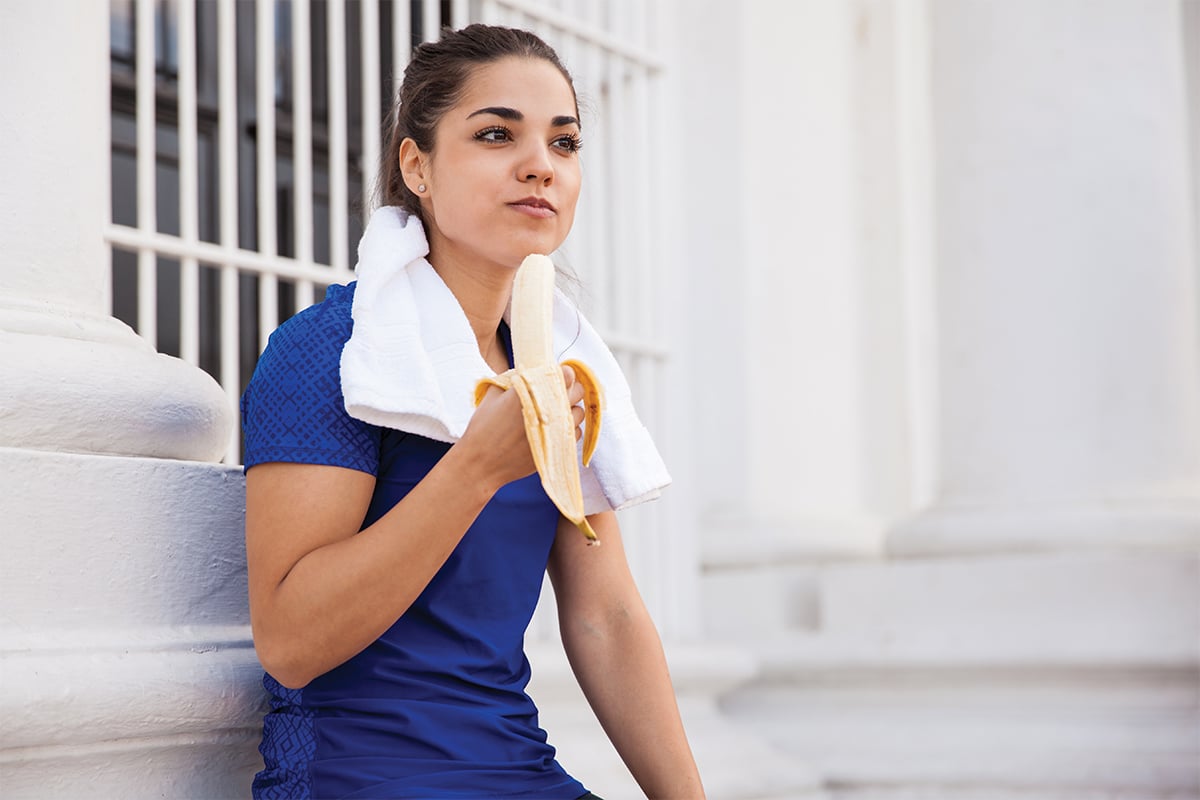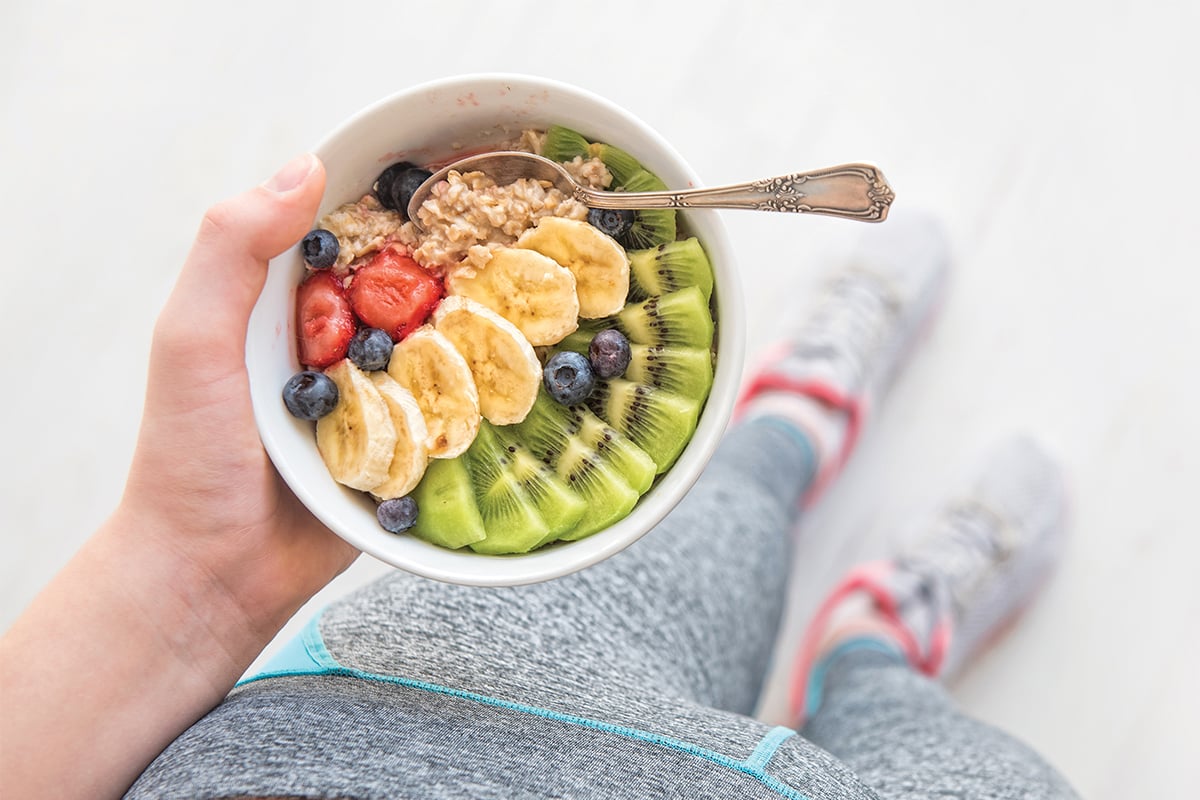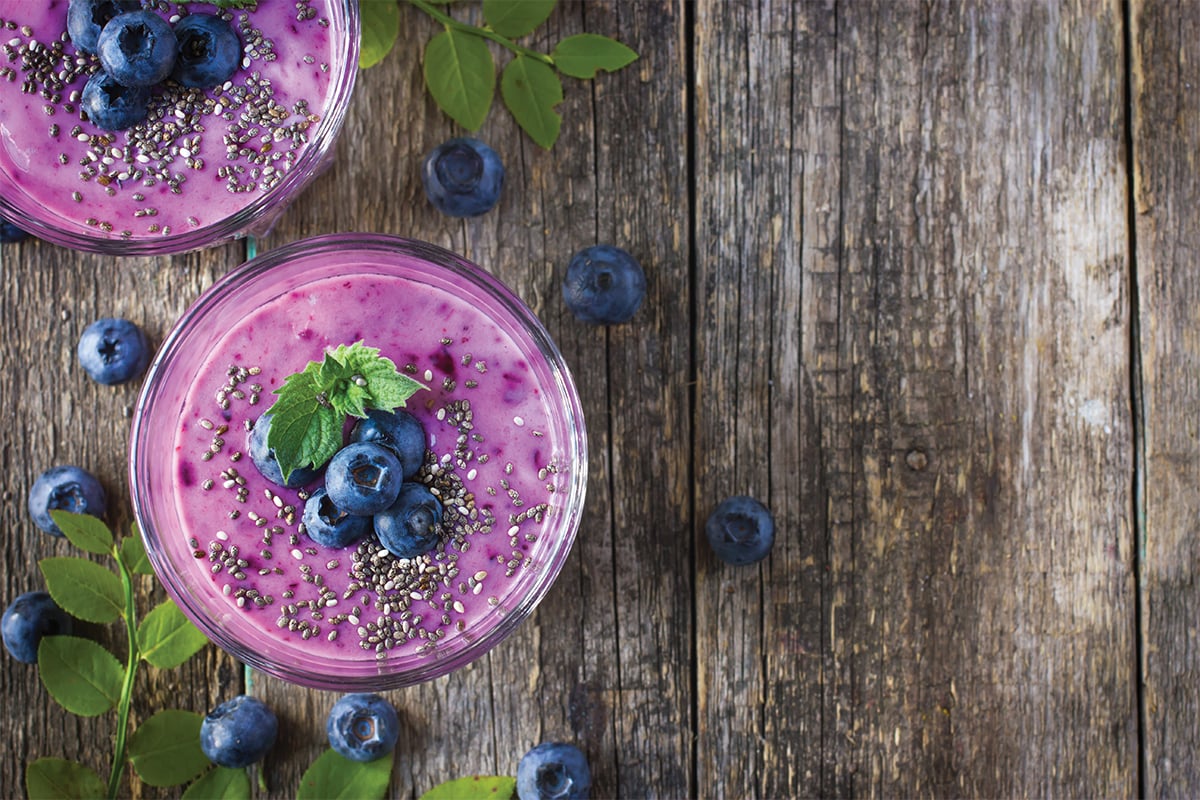How Lo G To See Reaulta I Xuatomer Service After Eitz Caelto Traini G
Originally appeared in the 2017 bound issue of American Fitness Mag. Nutrition and do are the primary pillars of a healthy lifestyle program. Just can coordinating eating and workout schedules improve our fettle results? And if so, how should our eating patterns differ earlier, during, and after activities? Melding a elevation-notch diet with stimulating practise tin be quite a challenge. Eating at unlike times, not targeting salubrious weight loss foods, skipping meals, overeating, snacking in between, working out irregularly, suffering from injuries … life gets in the way of our "healthy lifestyle plans." While flexibility can be a necessity and a virtue, keeping to a diet-and-exercise schedule has remarkable advantages. Eating regularly (5-7 times) throughout the twenty-four hours maintains proper blood sugar and free energy levels, while regular exercise consistently burns consumed calories (Alencar et al. 2015). Indeed, proper timing of diet and activeness helps lay the foundation for optimizing physical results. **If you are a nutrition coach, information technology pays to supplement your expertise with these nutritional insights. Find more NASM nutrition courses here to futher your knowledge. As we explore the benefits of coordinating workouts with food intake-both quality and quantity-your first question might focus on breakfast (every bit in, should y'all skip it) or another fast-and-fire routine. Some studies advise intense concrete activity such as running, pond or bicycling on an empty tum can increment fat burn down and promote weight loss (Schisler & Ianuzzo 2007). However, many experts caution confronting pre-practice fasting. Running on empty may help burn fat faster, only it won't get out enough free energy for more than rigorous training. It also can increment the chance of strains, sprains, stress fractures and other injuries from practice-related fatigue. Furthermore, letting the body get as well depleted may cause people to overeat later on, undoing the benefits of exercising in the first place. Therefore, adequate fueling before exercise is the ameliorate road to improving performance (Rosenbloom & Coleman 2012). This keeps the trunk fueled, providing steady free energy and a satisfied tum. Knowing the why, what and when to eat beforehand can make a significant difference in your training. As Jackie Kaminsky notes in her blog ten Diet Myths, food timing tin be effective overall, merely it's not for everyone. A diet programme is crucial for maximizing daily workouts and recovery, especially in the lead-up to the big solar day. And no meal is more important than the one just before a race, large game or other athletic effect. Choosing the wrong foods-eating or drinking too much, consuming too little or not timing a meal efficiently-can dramatically affect outcomes. Eating the ideal pre-race/event repast can assist ensure that all of the hard training and dedication pay off. Similarly, maintaining an appropriate daily sports-diet program creates the perfect opportunity for better results. The main goal of a pre-event/workout meal is to furnish glycogen, the short-term storage form of carbohydrate. This supplies firsthand energy needs and is crucial for morning workouts, as the liver is glycogen depleted from fueling the nervous system during sleep. The muscles, on the other hand, should exist glycogen-loaded from proper recovery nutrition the previous day. The body does not need a lot, but it needs something to prime number the metabolism, provide a directly energy source, and permit for the planned intensity and elapsing of the given workout. But what is that something? That pick can brand or break a workout. It is a adept thought to experiment with several pre-exercise snacks/meals and stick with the few that work best nether given circumstances. The bulk of nutrients in a pre conditioning repast should come from carbohydrates, as these macronutrients immediately fuel the trunk. Some protein should be consumed also, simply not a significant amount, equally protein takes longer to digest and does not serve an immediate need for the start of an activity. Fatty and dietary fiber also should be marginal to minimize the potential for gastrointestinal upset during the activity (Smith & Collene 2015). Research has demonstrated that the type of carbohydrate consumed does non direct affect performance across the board (Campbell et al. 2008). Regular foods are platonic (e.thousand., a bagel with peanut butter), just convenience foods (energy bars or replacement shakes) may exist helpful because y'all can make up one's mind the calories and the desired mix of carbohydrates, protein and fats. Exercisers might besides supplement with a piece of fruit, glass of low-fat chocolate milk or another preferred sugar, depending on needs. Pre-exercise fluids are disquisitional to preclude aridity. To allow time to excrete excess fluid, start at least 4 hours earlier an action and aim for an intake of 5-7 milliliters of water per kilogram of body weight (Rosenbloom & Coleman 2012). Earlier that, the athlete should drink enough water and fluids so that urine color is stake yellow and dilute-indicators of adequate hydration. Read more: What to Swallow Earlier a Workout Timing is a huge consideration for preworkout nutrition. Too early and the meal is gone past the time the exercise begins; also late and the tum is uncomfortably sloshing food effectually during the activity. Although trunk size, historic period, gender, metabolic rate, gastric motility and type of grooming are all meal-timing factors to consider, the ideal fourth dimension for well-nigh people to eat is about 2-iv hours before activity. This much pb fourth dimension tin can allow people to safely eat up to about 1,000 nutritious calories that will exist ready for fueling the activity (Smith & Collene 2015). If pb times are much shorter (a pre-vii a.k. workout, for example), eating a smaller repast of less than 300-400 calories almost an hr before the conditioning can suffice. It is customarily recommended that exercisers consume well-nigh 1 gram of carbohydrate per kilogram of trunk weight 1 hour before working out, and 2 grand of saccharide per kg of body weight if ii hours before exercise, and so on (Dunford & Doyle 2008). For a 150-pound athlete, that would equate to about 68 g (or iv-v servings) of carbohydrate, 1 60 minutes before exercise. For reference, 1 serving of a carbohydrate nutrient contains about 15 1000 of carbohydrate. In that location are virtually 15 g of carbohydrate in each of the following: 1 slice of whole-grain bread, 1 orangish, ½ cup cooked oatmeal, 1 small sweet potato or 1 loving cup low-fat milk. This 150-pound athlete could consider consuming: ½ cup oatmeal, 1 small apple, ½ cup low-fat yogurt and 4 ounces 100% fruit juice-all approximately i hr before working out. It is by and large best that anything consumed less than 1 hour before an upshot or workout be blended or liquid-such as a sports potable or smoothie-to promote rapid stomach emptying. Comport in listen that we are all individuals and our bodies will perform differently. It may take some study to sympathize what works all-time for you. Athletes should experiment with the size, timing and limerick of pre-consequence/activity meals to determine what will exist all-time tolerated. Preworkout foods should not only be hands digestible, simply also easily (and conveniently) consumed. A comprehensive preworkout nutrition plan should exist evaluated based on the duration and intensity of exertion, the ability to supplement during the activity, personal energy needs, environmental conditions and the start time. For example, a person who has a higher weight and is running in a longer-distance race probable needs a larger meal and supplemental nutrition during the event to maintain desired intensity. Determining how much is too much or too little can be frustrating, but self-experimentation is crucial for success. The athlete ought to sample unlike prework-out meals during diverse training intensities as trials for what works. Those preparation for a specific event should simulate race day as closely as possible (fourth dimension of day, atmospheric condition, etc.) when experimenting with several nutrition protocols to ensure optimal results. Run across how to count macros to keep your food timing as constructive as possible. Supplemental nutrition may not exist necessary during shorter or less-intense activeness bouts. Athletes may need to eat during the activity if exertion lasts more than roughly 1 hour and/or environmental atmospheric condition require glycogen to exist restored to maintain intensity and/or duration. If then, carbohydrate consumption should begin shortly after the start of exercise. The full general recommendation is based on the maximum rate of glucose absorption, which is to consume about 30-lx yard of carbohydrate per hr during prolonged exercise (Rosenbloom & Coleman 2012). One popular sports-nutrition tendency is to use multiple carb sources with different routes and rates of absorption to maximize the supply of energy to cells and lessen the hazard of GI distress (Burd et al. 2011). Sports drinks with 6-eight% carbohydrate are quick and user-friendly sources of fluid, saccharide and electrolytes during extended bouts of exercise. Consuming vi-12 ounces of such drinks every 15-30 minutes during exercise has been shown to extend the exercise capacity of some athletes (ACSM 2007). Nonetheless, athletes should refine these approaches according to their individual sweat rates, tolerances and exertion levels. Some athletes adopt gels or chews to replace carbohydrates during extended activities. These sports supplements are formulated with a specific composition of nutrients to quickly supply carbohydrates and electrolytes. About provide about 25 thousand of saccharide per serving and should exist consumed with h2o to speed digestion and forbid cramping. To better fettle and endurance, we must conceptualize the side by side episode of activity as soon as 1 exercise session ends. That means focusing on recovery, i of the nigh important-and often overlooked-aspects of proper sports nutrition. An effective nutrition recovery plan supplies the right nutrients at the right time. Recovery is the body's procedure of adapting to the previous workload and strengthening itself for the next physical challenge. Nutritional components of recovery include carbohydrates to replenish depleted fuel stores, protein to assistance repair damaged muscle and develop new muscle tissue, and fluids and electrolytes to rehydrate. A total, rapid recovery supplies more than free energy and hydration for the next workout or event, which improves performance and reduces the chance of injury. Rapid recovery is especially crucial during periods of heavy training and anytime 2 or more training sessions happen within 12 hours (Smith & Collene 2015). Grooming generally depletes muscle glycogen. The first 30 minutes or so after do provide an important opportunity for nutritional recovery due to factors like increased claret menstruum and insulin sensitivity, which boosts cellular glucose uptake and glycogen restoration (Rosenbloom & Coleman 2012). To maximize muscle glycogen replacement, athletes should eat a carbohydrate-rich snack within this 30-minute window. The recommendation for rapidly replenishing glycogen stores is to have in foods providing 1.0-1.5 k of carbohydrate per kg of trunk weight within 30 minutes of extended do (Smith & Collene 2015). For a 150-pound athlete, that equates to between 68 and 102 g of carbs (or ~ 4.5-6.five servings of carbs) immediately after exercise. Since this can exist difficult to swallow in whole foods shortly after activity, liquid and bar supplements may be useful and convenient afterward practise. Ideally, athletes should echo this carbohydrate load for 2-hour intervals for up to half-dozen hours, or transition to carbohydrate snacks and meals if another intense training session will occur within 24 hours (Smith & Collene 2015). Consuming smaller amounts of carbohydrates more frequently may exist prudent if the previous recommendation leaves the athlete feeling too total. Muscle tissue repair and musculus edifice are important for recovery. Whether you're focusing on endurance or strength preparation, taking in protein after a workout provides the amino acid edifice blocks needed to repair muscle fibers that get damaged and catabolized during exercise, and to promote the development of new muscle tissue. Although daily protein requirements vary amidst individuals, consuming fifteen-25 g of protein within 1 hr after practice tin can maximize the muscle rebuilding and repair process (Rosenbloom & Coleman 2012). Recent research has further demonstrated that a like corporeality of poly peptide (approximately 15-thirty g) after resistance exercise may even benefit athletes on calorie-restricted diets who also want to maintain lean body mass (Areta et al. 2014). It is important to note that some literature emphasizing extremely high levels of protein intake-well beyond these recommendations-for forcefulness training may exist dated and lack quality research (Spendlove et al. 2015). Virtually all weight lost during exercise is fluid, then weighing yourself (without clothes) earlier and afterwards exercise tin help gauge net fluid losses. Replace fluids by gradually (within 4-six hours) drinking 16-24 fluid ounces of a recovery drinkable, sports drink or h2o for every pound of weight lost (Smith & Collene 2015). It is important to restore hydration condition before the side by side exercise flow. Rehydration volition be more than effective when sodium is included with the fluid and nutrient consumed during recovery-especially in hot/humid conditions. Withal, water may exist all you lot need if exercising for less than 1 hour at a low intensity. While these recommendations are a proficient starting point, at that place are no absolute sports nutrition rules that satisfy anybody'south needs…and so paying attention to how you lot feel during exercise and how nutrition affects performance is of utmost importance. You may accept to use different timing and alternate routines to create a nutrition and exercise combo that works all-time. Timing certainly is critical in sports nutrition, and optimizing that tin make all the difference! Read also: Musculus Clocks - The Value of Synchronized Preparation Fast set up: You tin can positively affect event outcomes by eating the correct foods in the right amounts at the right times. A good fashion to offset recovery is to consume a snack with carbohydrates and a moderate amount of poly peptide, plus fluids and sodium, inside 30 minutes later exercise. If you have no appetite post-exercise, a recovery beverage may be a good option. Cool down, chow down: Don't skimp on food and fluids after a workout. To recover quickly and completely, your trunk needs healthy fuel like the choices shown here-showtime within 30 minutes of your session's end. Alencar, 1000.K., et al. 2015. Increased meal frequency attenuates fat-free mass losses and some markers of health status with a portion-controlled weight loss diet. Diet Research, 35 (5), 375-83. American College of Sports Medicine. 2007. ACSM position stand. Exertional heat illness during training and competition. Medicine & Scientific discipline in Sports & Exercise, 39 (3), 556-72. Areta, J.L., et al. 2014. Reducing resting skeletal muscle poly peptide synthesis is rescued by resistance practice and protein ingestion post-obit short-term energy deficit. American Periodical of Physiology: Endocrinology and Metabolism, 306 (8), E989-97. Burd, N.A., et al. 2011 A-Z of nutritional supplements: dietary supplements, sports nutrition foods and ergogenic aids for health and performance-Part 26. British Journal of Sports Medicine, 45, 1163-64. Campbell, C., et al. 2008. Carbohydrate-supplement course and do performance. International Journal of Sports Nutrition and Practise Metabolism, 18 (two), 179-90. Dunford, Chiliad., & Doyle, A. 2008. Nutrition for Sport and Practise (2nd ed.). Boston: Wadsworth Publishing. Rosenbloom, C., & Coleman, E. 2012. Sports Diet: Schisler, J.A., & Ianuzzo, C.D. 2007. Running to maintain cardiovascular fettle is not express by short-term fasting or enhanced by carbohydrate supplementation. Journal of Concrete Action & Health, 4 (1), 101-12. Smith, A.1000., & Collene, A.L. 2015. Wardlaw's Contemporary Nutrition (tenth ed.). New York: Morgan-Hill. Spendlove, J., et al. 2015. Dietary intake of competitive bodybuilders. Sports Medicine, 45 (7), 1041-63.Does Fast-and-Burn Work for Weight Loss?
Training and Nutrient Timing Before Events
WHY Eat Before a conditioning?
WHAT to Eat Earlier a workout
WHEN to Eat Before a conditioning?
effective Eating Before a workout
should you eating During a conditioning?
workout recovery basics and nutrition
When to Start Replenishing Carbs AFTER exercise

What About Protein?
REHYDRATE Effectively With Fluids and Sodium
Heed to Your Torso's Timing Signals
Quick Tips for Eating and Drinking Earlier a Race/Event


Best Post-Workout MEals
REFERENCES:
A Practice Transmission for Professionals (5th ed.). Chicago: American Dietetic Association.
How Lo G To See Reaulta I Xuatomer Service After Eitz Caelto Traini G,
Source: https://blog.nasm.org/workout-and-nutrition-timing
Posted by: kylelinsomont.blogspot.com


0 Response to "How Lo G To See Reaulta I Xuatomer Service After Eitz Caelto Traini G"
Post a Comment